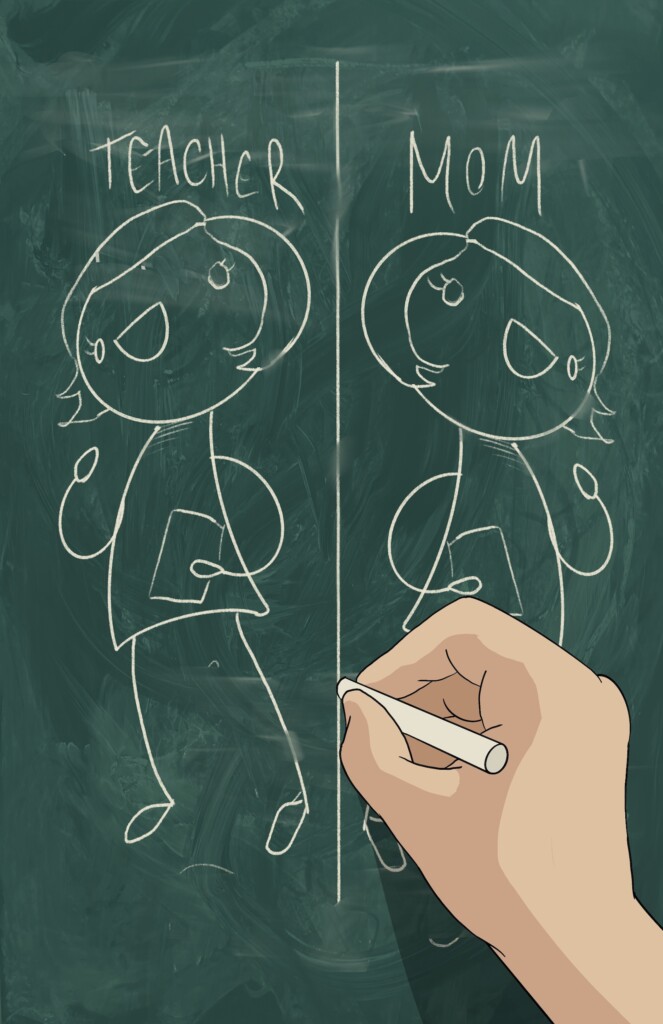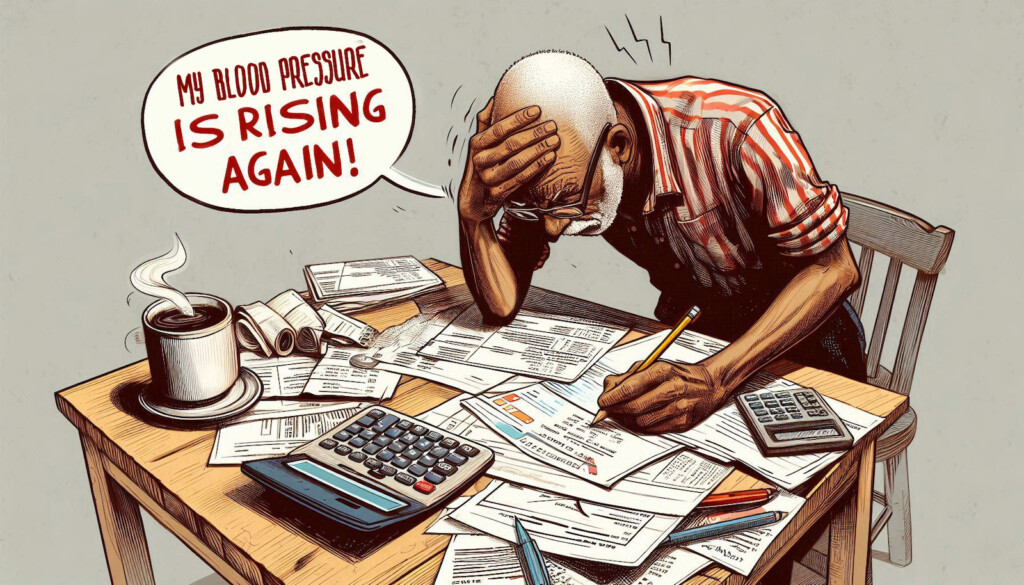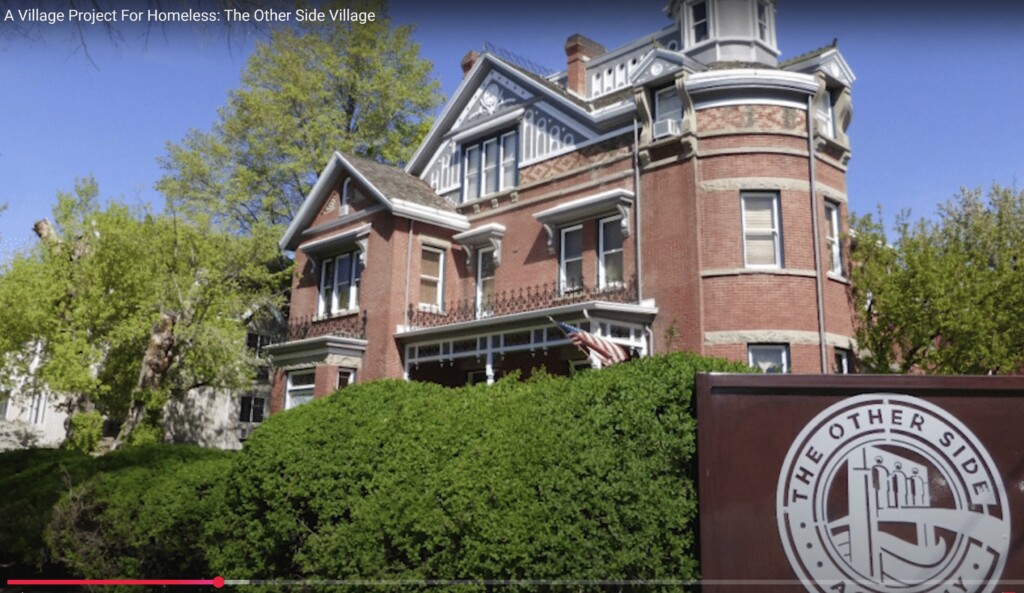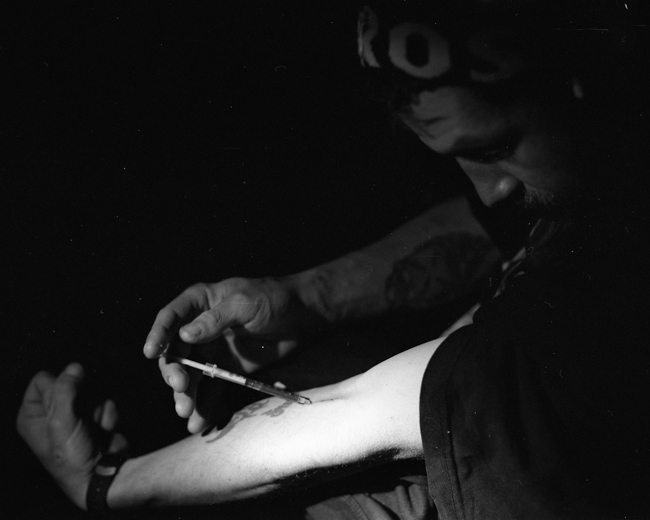
If a lighthouse were planted on Lookout Peak above Salt Lake City, you could trace the lambency of its beacon in a southwestern direction down the mountainside, across the polished spires of the Mormon temple, through the glass façade of Vivint Arena, and finally into the Block, where the light would disperse and settle like falling snow.
The Block is the gathering place for many of Salt Lake City’s homeless. It’s an ambiguous space, named by its denizens, where the train and bus stations, Rescue Mission, Catholic Community Services, and Salt Lake Community Shelter all converge. Impoverished vagrants, addicts, and alcoholics flow into the Block and eddy there, swirling through doors and bunk beds and food lines until they can nab a life preserver or paddle to safety. It’s an island of sorts, a welcome harbor to those lost at sea. Yet to land there is to be marooned, and, for many, escaping means swimming against torrential tides.
Twenty-seven-year old Jeremy drifted in seven months ago.
~~~
I met Jeremy on a sunny November afternoon, plodding down a littered street on the fringes of the Block. I picked on Jeremy, I suppose, because of his physical structure. Unlike many occupants on the Block, whose atoms convulse and spasm, Jeremy’s energies vibrate harmoniously and dance in quietude; the cloud that hangs over him is a welcoming gray. So when I saw a man leap from the passenger side of a pickup and approach him, I, too, trotted over.
“Do you know where I can get some black?” I asked.
“That’s where we’re going right now,” Jeremy said, referring to himself and the man from the truck.
“Mind if I tag along?”
“Nope.”
Black is the street word for heroin in Salt Lake City. Skag, dope, and smack are bygone terms. Black is less ugly and more to the point. So too is white for cocaine, and cris for crystal meth. Dealers on the Block pace street corners and whisper at passersby, “Black, white, cris,” to let potential customers know they are dealing the drugs, or are running for someone who is.
Jeremy’s not a dealer, though. Nor is he a runner. Jeremy, like many addicts on the Block, is a hustler. That means he runs when he has to, or shoplifts and swaps the rewards thereof, or upcharges suburbanites like me until he’s earned enough dough for his daily fix, which for Jeremy is between twenty and thirty bucks.
I grabbed my backpack from my van and followed Jeremy and the other customer around a corner, catching up to them as they approached a light rail stop.
“Where are we going?” I asked.
Jeremy explained that he would peer through the train’s windows as it approached. If the right man were aboard, we would hop on and make the transaction.
And that’s exactly what we did.
In the back of the train, a white man with thinning hair and reddish beard sat alone. Black sunglasses steadied his gaze. He was dressed corporate casual, wearing a white shirt and camel sport coat. This new kind of runner (as opposed to the traditional twenty-something-year-old Mexican male) represents dealers’ latest effort to avoid police detection. I handed Jeremy twenty dollars, and he disappeared for 30 seconds, huddling near the man. A half-dozen other tramps followed, moving in one by one like hyenas stealing a bite of meat off a wildebeest.
Two minutes later we were at the next stop. A crop of addicts, now with dope in their pockets, spilled off the train. Back on the street, Jeremy handed me a balloon.
At $10 a pop, a balloon—or B for short—carries one-tenth to two-tenths of a gram of your favored drug. Once sold in tiny water balloons—hence the name—ten-spots now come packaged in a small patch of garbage bag that has been folded over, twisted like a loaf of bread, tied off, and double layered. To keep things orderly, heroin comes in black plastic, cocaine in white plastic. Each knotted bag is about the size of a pencil eraser, and opening one, if you’ve acquired the taste, is better than peeling back the gold foil of a mini peanut butter cup on Christmas morning.
I inspected the balloon. A scent of ether and Febreze wafted into my nostrils and sent tingles down my dendrites. My eyes flicked a bit, wanting to roll up in my head as in orgasm. Balloons always smell of the mixture of pungent heroin, acidic cocaine, and scented garbage bags, all of which signal what is about to come. I shook off the trance; I wasn’t hunting a heroin high. I overpaid for that balloon because I wanted access, and that’s when I broke it to Jeremy.
I said, in not as few words, that I once had been addicted to heroin myself, and that I now wanted entry to the life again but without having to descend the lonely road. I then asked Jeremy if he would open himself up and show me around the Block. He hesitated, naturally. But he didn’t throw punches or run from me, so we walked and talked for 30 minutes before settling roadside in the late-day sunlight.
Jeremy began using opiates at fourteen. One time he got clean for a few months, but a Lortab veered him onto his current path. He was working construction at the time, and suffering back pain. His mother, presumably wanting to relieve his ache, gave him the pill. It took four or five months to get addicted again, Jeremy explained, but he knew exactly where he was headed.
As Jeremy spoke he barely made eye contact with me. He alternately looked into the ground or distance. His Adonis hair curled out from beneath his beanie, framing his high cheekbones and pellucid eyes. The winter sun glinted here and there in his dark beard, which grows thickest along his chin and jawline, accentuating gaunt cheeks. Jeremy is at once bedraggled and clean; it’s clear he lives on the streets, and it’s clear he looks after himself. There is in his demeanor both boyhood sincerity and the marring scars of manhood. This, I tell myself, is why I was drawn to him from across the street.
Jeremy has two baby daughters with his high-school sweetheart, whom he makes it a point to call his wife, though they’ve never officially married. She’s clean today, but during their courtship she and Jeremy shared almost every first: tobacco, alcohol, weed, heroin, meth. The needle. They know each other that thoroughly, and that’s why Jeremy believes it’ll never work. Yet despite this apparent acceptance of tragedy, Jeremy claims to be in complete control of his fate. He says that his parents’ meth addiction in his youth has nothing to do with where he’s at today, that he could have done anything with his life, gone to Harvard had he wanted. On the surface, this admission looks like true integrity. Indeed, the first step toward recovery is to own one’s choices. But it’s hard not to wonder whether this might be a refusal to acknowledge reality, a white-knuckled effort to bend the world to that diehard American narrative that says willpower and heart can and do overcome all obstacles. If this is the case, Jeremy is a man who is roughly fourteen inside and carrying this broken world on his shoulders, believing that he broke it.
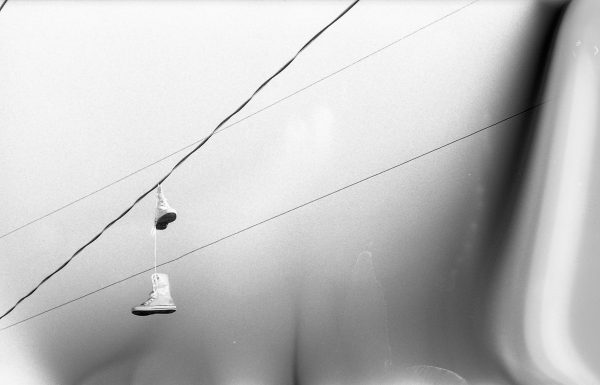
I watched as Jeremy took the dab of tar heroin from a balloon, pulled a syringe from his pocket (called a point on the street), and removed the small cap from the syringe’s plunger. He dropped the heroin in the cap, and added a tad of water. Then he used the thumbpiece on the plunger to mash the heroin inside the cap, to dissolve it in the water. (This method of liquefying heroin, Jeremy explained, is called cold-cooking; lighter and spoon not required.) After the dope dissolved, Jeremy tore a piece of cotton from his hoodie, hooked it on his point, and drew up the brown liquid. He performed this ritual with grace and agility. I thought about turning my head for what came next—partly out of respect for such plaintive worship, partly out of fear for what demons might be invoked in me—but I looked on. Jeremy straightened his left arm, stretched and clenched his fingers a bit as though trying on a glove, then made a fist, causing the veins in his hand to bulge. With his right hand he stuck the needle into the back of his left, drew it back slightly, then plunged down.
A warm and frothy ocean rose up in my blood. Its gentle heat washed over me in soft tidal waves. I drifted, half of me in the rip current, half of me on the floor of the sea. This fluid sensation kneaded my mind and body, lapped at my frayed edges with easy caress. The world stilled. I breathed in. Jeremy backed the needle out, then licked the tip of his pointer finger to dab the drop of blood from his relaxing hand. His eyelids creaked down, touched, then came back up halfway, eyes fixed on the nowhere. I breathed out, lit a post-coitus cigarette, and inhaled it with relief. I hadn’t anticipated the vicarious buzz.
Some drugs change people noticeably, but heroin isn’t one of them. The eyes rolling back, the nodding off—that happens. But only in large or sudden doses, and not as often as most addicts would like. It’s more common for people on heroin—or any opiate, for that matter—to behave like everyone else. They can drive, work, do math. In the long run, it’s not the heroin that destroys a user (so long as he or she doesn’t overdose), but the chasing it. The need for heroin, once its hooks are in, exceeds all other needs and wants. And it’s this preoccupation, this obsession that incurs neglect and ruins lives. But the physical and psychological effects of heroin, used moderately, are often imperceptible.
Heroin doesn’t induce hallucinations or erratic behavior. It calms. As a narcotic, it dulls the senses, working as a protective blanket against life’s sharp edges and pains. Its side effects effervesce subtly, shrouding the personality, so that the user can walk and talk like anyone, but with subdued vitality. Yet perhaps in the same way life’s pains can’t penetrate that diaphanous barrier, so too can’t friends and family. That’s what I noticed when Jeremy shot up, anyway. The good-looking, intelligent young man still sat before me, but his charisma had withered. He continued to speak and move, and I could see and hear him, but I couldn’t feel him, at least not in the way I could prior to his dosing. Heroin, it seems, isolates the user regardless of whose presence he is in. It’s a reverse invisible cloak: you see me, but I’m not really here.
Jeremy stood and said he had to go. Then he rode off on a silver bicycle. But not before he agreed to talk further. He said he’d be around.
~~~
A week passed and I didn’t see Jeremy. I wondered whether he had escaped the gravity of the Block. He had said on our previous visit that he had a plan for getting out of there, and expected to do so within two weeks. At the time, I chalked this up to unfounded optimism. Addicts often intend to get straight in the same way overweight people intend to start diets. I had almost given up on seeing Jeremy again when one night, just after dark, in a heavy rain, I turned and there he was. He was watching me, a hood pulled over his head, as if waiting for me to notice him.
“What are you doing?” he asked.
“Looking for you,” I think I replied.
Jeremy was in a new mood. He told the friend he was with that he’d catch up later, and he and I walked down a clammy sidewalk, huddling against the rain.
“At first, I wasn’t too sure, but with everything going on I want people to know,” Jeremy said, referring to our conversations.
The “everything going on” was aggressive policing. Jeremy had spent the previous week in jail, which is why I hadn’t been able to find him. It was his first time going to jail, and for possession with intent to distribute. He had been running for the Hondos (a street name for the Honduran dealers who dominate drug trade on the Block) in order to earn his daily fix, and the police nabbed him before he could swallow the balloons he was carrying. While in jail, he saw five Hondos get booked. This increased police activity spooked Jeremy, made him rethink his situation. “My very first time going to jail,” he said, “and my very last. I’m not going back.”
Yet here he was on the street, still running around looking for drugs. Jeremy could’ve leveraged that jail time as clean time, gone home with a clearer head having endured the worst of withdrawals, and focused on recovery. He says his mom would welcome him anytime. And addicts often use jail time to spring into sobriety, so why not Jeremy?
Before I could ask this, Jeremy had to get high. I could see he was in early withdrawals—anxious, twitchy—but I wasn’t prepared to follow him around in the rain looking for a B, so I did a dubious deed: I offered him the balloon I had bought the previous week. I suspected it would come to this—that I would give someone heroin in exchange for their time. Besides, I hate seeing a man in withdrawal, no matter how well he handles it. Jeremy, for the record, handles it better than anyone I’ve seen.
We made it back to my van, climbed in, and cranked the heater. Lamplight from the street glistened on the rain-soaked windows. Jeremy loaded a syringe, I cracked a beer.
Asking a man why he’s addicted to heroin is a bit like asking him why he fell in a love with a woman he can’t stand. The reasons are myriad and often inaccessible. Perhaps there are no reasons at all. But that old narrative that says abuse or depression or mental illness or depravity is the source of addiction is not as universal as we’ve been taught to believe. Jeremy, in particular, illustrates the ambiguities of addiction, saying on one hand “I don’t want the next generation to go through what I’ve gone through.” But when pressed about what he’s gone through, he replies, “I don’t blame anyone.” Then he recounts what sounds like a typical though difficult working-class upbringing. He grew up in Sandy in a nice suburban home, his parents divorced when he was five, forcing his mom to work two jobs, and his brothers were rarely around. And though he knows today that his parents used drugs, he never saw them do so. Jeremy grew up latchkey style, in other words, but he wasn’t abused. In short, he didn’t intend to go down this road, the same way the Mormon mother of four with a house on the east bench and a husband who drives an Audi doesn’t intend to get addicted to Adderall and Xanax. Addiction, like God, is no respecter of persons.
There is, of course, the chance that I didn’t earn Jeremy’s trust sufficiently, or that I failed to inquire deep enough, and that underneath his rugged self-responsibility lies a series of childhood traumas. Or it could be that there are other causes. A cursory Google search of “heroin use in Salt Lake City” yields a grip of articles that cite increased trafficking, gangs, and homelessness as the culprits of SLC’s staggering heroin addiction rates. Officers and politicians, when queried, point fingers outwardly and talk about cracking down and cleaning up. But Jeremy suggests something else.
“There are so many good people down here that don’t deserve to be down here,” he says. “And the reason they’re down here, honestly, is because they have some of the most brilliant minds. I believe society is afraid. The government is afraid of these super smart people that don’t fall into line. They’re people that choose to do it their way, they’re free-minded. You know, there’s a certain way society wants you to be, and that’s to have a job, have a wife, have kids. In Utah it’s go to church, get married in the temple. Like, you have to follow this system. I compare it to a motherboard of a computer: every little piece to a computer makes it function a certain way, and everybody that’s following the rules is a right piece to the computer. But we are perceived to be the virus. We are the toss-out.”
“Because you’ll fuck with the system?” I asked.
“Mmhmm. We interrupt the regular flow, the traditional life.”
“What does this flow serve?”
“The flow serves the people that are already benefitting from it. So, Future Generation, unless you’re born into the families that are already benefitting, you’re just a sheep. You’re just one of their sheep that they can shave and make money off of. All you do is produce the wool that warms their families.”
It’s easy to dismiss Jeremy’s lament as juvenile quibbling or conspiracy theorizing or an effort to rationalize unsavory behavior. But to do so is to overlook trends in heroin addiction, what sparked those trends, and how we as a nation are responding to them.
Most people today are familiar with the story that goes something like this: Doctor prescribes OxyContin to upstanding regular Joe or Jane. Regular Joe/Jane gets addicted. Doctor cancels prescription or patient loses means of paying for it. Patient then hits the black market for pills, supports habit for a time, but ultimately resorts to that cheaper street alternative: heroin. Upstanding citizen becomes a “junkie.”
This is only the middle of the story, though. There is also a prelude, and a tragic denouement.
Since 2000, heroin use rates have doubled to quadrupled across the country. By all accounts, this is due to the OxyContin boom, which took root in the late 1990s. Purdue Pharma, maker of OxyContin, aggressively marketed the drug as a non-addictive painkiller. During this same period, the federal government pushed an initiative that required doctors to treat pain as a major component of overall health and wellbeing. The combination of these efforts allowed Purdue to rake in over $1bn from OxyContin sales inside five years. But the drug quickly became notorious due to skyrocketing overdose rates and media attention. It also became that much more desirable. By 2005, every American had heard of OxyContin, like Nike or Coca-Cola.
America was well aware of its opiate epidemic by this time. Lawmakers and law enforcers were already scrambling for solutions. But so, too, were pharmaceutical companies. In the early aughts, Reckitt Benckiser promised to save America’s addicted middle class with a new drug called Suboxone. The drug was said to eliminate withdrawals and curb cravings. It was also said to be non-addictive. And because doctors could prescribe it, addicts wouldn’t have to stand in line at treatment clinics for daily doses of methadone. Suboxone was supposed to curtail the Oxy-turned-heroin plague. Within months, however, 8mg pills of Suboxone were selling for $25 on the street. Addiction and overdoses followed.
That’s not to say Suboxone—or methadone for that matter—can’t help. It can—for those who can afford it. By the time an addict seeks treatment he is, in many cases, at or near rock bottom. He’s unlikely to have a job or insurance, so instead of going to a doctor he might try one of Utah’s recovery clinics and pay roughly $100 per week for methadone, or $150 per week for Suboxone. This doesn’t sound expensive—and isn’t compared to the $30,000 per month recovery resorts that finance treatment, whose billboards litter Utah’s byways, or even compared to a full-blown heroin habit—but the streets don’t require you to pay a week at a time. At $150 per week, or $600 per month, a Suboxone treatment program is as expensive as rent or groceries or a car payment and gas. And for all the hope it offers, it carries similar risks to heroin in terms of addiction potential, withdrawal, and overdose. Still, aside from going cold turkey, a horrendous feat, Suboxone might be an addict’s best option for getting clean.
Given this context, it’s easier to see why Jeremy criticizes society. Our heroin epidemic emerged with Big Pharma selling a cure for pain, and the people who became addicted to that cure are now told they can end their misery if they will only buy a new cure for pain. Perhaps this is one feature of “the system” that Jeremy alluded to. Yet for all his discontent, Jeremy still aspires to a drug-free, regular life. “I know what I want to do, and that’s to help all these good people,” he says. “I want to serve the people the way I’ve been served while living down here. I could show them that you can get out.”
Fifteen minutes after shooting up, Jeremy’s nose began to bleed. He said hypertension. Although he looks healthy, it’s likely that Jeremy has deprived his body for months, eating and sleeping and drinking only when doing so doesn’t interfere with getting or using drugs. When he shifts in his seat or sits cross-legged, bony legs reveal themselves behind his sweatpants. We decided to eat street tacos. The rain let up.
Jeremy and I slept in the van that night, parked near an abandoned building. He took the front seat, reclining it, and I took the bed in back. It was more like he passed out than fell asleep, though. He never even took his shoes off. The heroin, undoubtedly, is partly to blame. He had said it was damn good. But lying there, Jeremy also looked exhausted, like a man who for the first time in days had food in his belly, drugs in his blood, and worry out of mind. I threw him a blanket, and turned out the light.
We awoke the next morning to cool and clear skies. Cottony clouds drifted along the Wasatch Range. The sunlight was both wintry and warm. Jeremy agreed to let me accompany him around the Block, so I could observe him work on getting his daily fix. But not before getting coffee, I suggested. As I pulled into a drive-thru coffeehouse, I asked Jeremy if he wanted a cup. He looked at me, in a puppy dog way, opened his mouth and stuttered, “No, thank you.” Jeremy wanted that cup of coffee, I could tell. Coffee, after a night of good sleep, and on a chill morning, is one of life’s most simple and sublime pleasures. Nonetheless, he declined it. It was in that brief interlude that Jeremy told me what kind of man he is, or what kind of man he wants to be, anyway. Had Jeremy had money in his pocket, he would’ve accepted the brew, or paid for it himself. But because he didn’t, the coffee signified a handout, and taking it would’ve meant an abuse of generosity, or a slip toward dependency. Of course, I didn’t see the gesture this way, but it sure seemed Jeremy did.
What does a shoplifting heroin addict know about integrity or self-reliance? Truth be told, Jeremy’s integrity appears to be a source of both pride and pain. He bears it religiously. He doesn’t cash in on his mom’s standing invitation to come home because he knows she disapproves of his drug use. Jeremy could attempt to hide his habit, but he refuses to betray his mother’s trust or exploit her concern. He won’t go home until he is clean, and until he believes he can remain clean. While in jail he didn’t solicit family or friends for the same reason. “I never once asked anybody to bail me out or bring me money,” he said. “I was there because I did something that they told me not to do, and I don’t feel like they should have to pay for my mistakes. That’s on me. I’m an adult. It’s my time.”
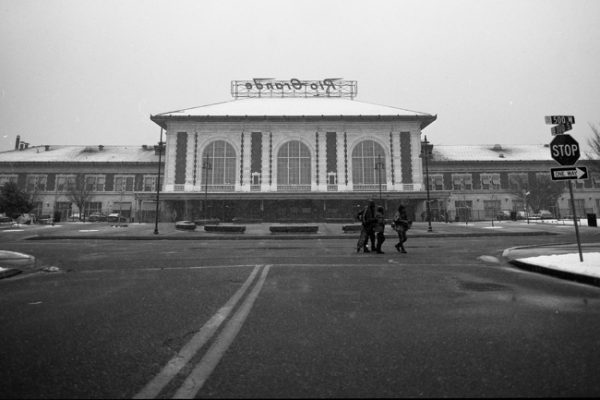
Back down on the Block the hustle was brewing. People were rousing out of the tents and blankets that speckle the grassy median west of Rio Grande Street, which is the heart of the Block. Some folks zigzagged back and forth, from crowd to crowd, corner to corner, walking quietly but quickly, whispering and plotting, making deals. Others lied in the sunshine, smoking on cigarettes and spice joints and meth pipes. Street life has tarnished everyone’s attire to a blackish brown, so that they all seem to be wearing the same basic garb. This drab appearance serves as a marker; it let’s Block inhabitants know who is one of them, and who isn’t. Outsiders are as unmistakable as American tourists are to port cities on Mexico’s coastline, and they represent the same thing: money.
I know this because I was solicited several times, despite my efforts to appear shabby. My secondhand clothing and unwashed hair and apathetic stare were unconvincing apparently. I would reply, when asked what I needed, “Nothing. I’m good.” Solicitors then responded with a confused look or a “Then what the fuck are you doing here?”
“Hanging out,” I would say.
Because I was. I had tried to keep up with Jeremy as he hustled, but gave up when he hadn’t brokered a deal after an hour. I felt my presence was hindering his progress, so I sat on a large rock and watched and talked with people, checking in with Jeremy every hour or so when he would reappear.
For years I’ve observed from a distance the confluence of addicts and homeless on downtown SLC’s western edge. And, driving or walking by, I’ve sensed a kind of madness and lethargy in the culture there. It’s hard to make sense of this way of life, peering on as an outsider, as a working citizen or so-called normal person. It appears, from this vantage point, that those on the Block are lost, have veered off course, that they’re living life wrong. But after going inside the community, I feel quite differently. There’s a soothing and intoxicating immediacy on the Block, a closeness to life, a way of being that feels real and raw and honest that I was ignorant to before. The Block is at once shut out from the world and protected from it. It’s an island for sure, an Atlantis, a paradise as much as a marooning rock. And though many of its inhabitants talk of feeling trapped, just as many talk of being free. They talk of life with an air of hard-earned insight, like men and women who once were slaves but that have fought and won release.
After four hours of watching the morning market, I decided to leave. I gave up on reconnecting with Jeremy. He had become myopic in his hunt for heroin, diligent even, helping his friends and cohorts with their needs. I did manage, however, before leaving, to encourage him to visit his mom on Thanksgiving. He half reflected on the suggestion, nodding and shrugging at the same time. Then I drove off, out into the sea of society. I was jarred by all the people buzzing to and fro, marching in and out of shops and buildings like obedient soldiers, staring into tiny screens as if into a starry Universe. So this is what it means to be normal and well adjusted, I wondered to myself. Out “there,” we seem to believe, behind the next door or pixel, in the next new gadget or vacation or promotion, in the next success or relationship—in the next fix—lays the cure for pain.
Related article: What Are The Causes of Utah’s Opiate Addiction Epidemic?


